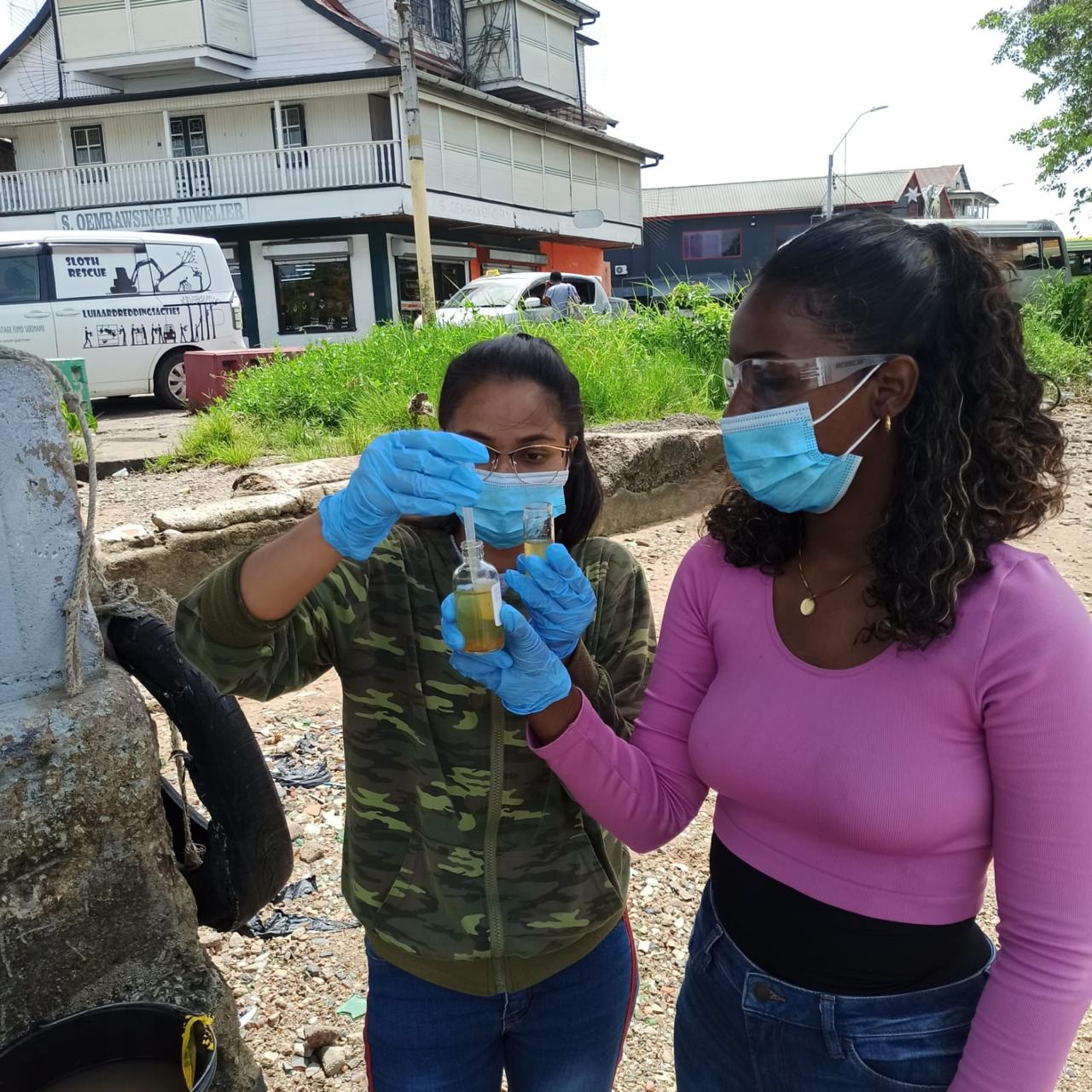Stars and STEM Stories
Exploring the Health of the Suriname River
The Suriname River is the country’s most prominent and longest river and runs for 480 kilometers (298 miles) though Suriname. It is a significant natural resource for the country, flowing from its source in the Guiana Highlands to the Atlantic Ocean, passing through various crucial habitats. Its health directly affects the ecosystems and the indigenous communities along its banks. As the river flows through Paramaribo, the capital city, it is subject to urban pollution, which has been a growing concern, with frequent reports of pollution and flooding in the inner city, particularly during the rainy season.
Recently, two students from the Institute for Natural Resource and Engineering Studies (NATIN) conducted important research on the water quality of the Suriname River and, specifically, on the impact of urbanization on this important river. The students worked with GLOBE partner the Green Heritage Fund Suriname (GHFS). This research project aligned well with GHFS’s mission to protect and preserve Suriname’s natural heritage, and GHFS was proud to support the young researchers in their efforts. By understanding the river's water quality, GHFS can better address pollution issues and promote sustainable urban development.
 Using GLOBE methodologies and their own knowledge of hydro-meteorology, the students investigated various hydrological parameters for the river, such as nitrate, temperature, pH, dissolved oxygen, conductivity, transparency, and turbidity. Despite a limited research period of one month, they successfully collected samples at two locations in Paramaribo and conducted a survey with 57 residents and workers along the Suriname River in the districts of Para, Wanica, and Paramaribo. The Hydraulic Research Division, Waterloopkundige Dienst, Suriname provided the students with information on parts of the river they couldn’t access.
Using GLOBE methodologies and their own knowledge of hydro-meteorology, the students investigated various hydrological parameters for the river, such as nitrate, temperature, pH, dissolved oxygen, conductivity, transparency, and turbidity. Despite a limited research period of one month, they successfully collected samples at two locations in Paramaribo and conducted a survey with 57 residents and workers along the Suriname River in the districts of Para, Wanica, and Paramaribo. The Hydraulic Research Division, Waterloopkundige Dienst, Suriname provided the students with information on parts of the river they couldn’t access.
The findings from the students’ research indicated that urbanization significantly impacts the water quality of the Suriname River, evidenced by higher turbidity and conductivity, as well as lower dissolved oxygen and transparency in urban areas. Furthermore, the results of the survey revealed that the public believes that the health of the river has declined and that there is a need for greater awareness about the impact of urbanization on the river. A similar study in Poland showed noticeable changes in water quality as rivers pass through urban areas (Glińska-Lewczuk et al., 2016).
This GLOBE project is an example of the integration of scientific research with community engagement. The students not only collected hydrological data but also conducted a survey among residents and workers along the Suriname River. This comprehensive approach provides valuable insights into the environmental impact of urbanization on water quality, demonstrating the importance of GLOBE’s focus on hands-on, community-based science education. It highlights how GLOBE’s methodologies can be applied to real-world issues, fostering a new generation of environmental stewards.
Thanks to GLOBE Suriname for participating in GLOBE for the past seven years, and thanks to Assistant Country Coordinator Cheyenne Samson in Paramaribo, Suriname, for reporting on this student research.
Reference
Glińska-Lewczuk, K., Gołaś, I., Koc, J., et al. (2016). The impact of urban areas on the water quality gradient along a lowland river. Environmental Monitoring and Assessment, 188(624). https://doi.org/10.1007/s10661-016-5638-z





